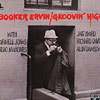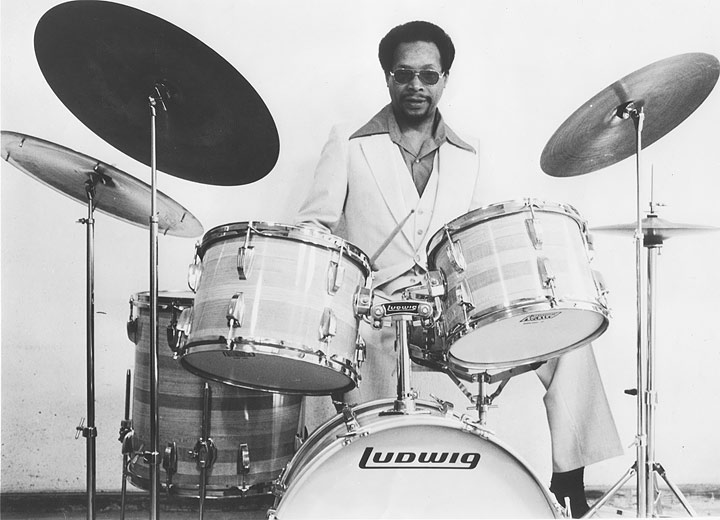

| Alan Dawson |
|
Alan Dawson, his performance credits are staggering, like reading
a who's who in jazz: Oscar Peterson, George Shearing, Charles Mingus, Woody Shaw, Phil
Woods, Sonny Stitt, Dave Brubeck, Lionel Hampton, Reggie Workman, Quincy Jones, Dexter
Gordon, Tal Farlow, Earl Hines, Rahsaan Roland Kirk, Frank Morgan, Hank Jones, Frank
Foster, Phineas Newborn, Charles McPhereson, Jaki Byard, Teddy Wilson, Booker Ervin, James
Williams, Phil Wilson, Terry Gibbs, and many others.
Equally impressive are his former students who have gone on to become their own innovators: Tony Williams, Terri Lyne Carrington, Steve Smith, Joe LaBarbera, Joe Corsello, Kenwood Dennard, John "J.R." Robinson, Casey Scheuerell, Harvey Mason, Vinnie Colaiuta, Keith Copeland, Jake Hanna, Bobby Ward, Akira Tana, and many, many, others. George "Alan" Dawson was born in 1929 in Marietta, Pennsylvania and raised in Boston's Roxbury neighborhood. He studied drumset for four years with percussionist Charles Alden before serving in the Army for Korean War duty. Dawson played with the Army Dance Band while stationed at Fort Dix from 1951-1953. During his army experience, Dawson was able to dive into the post-bop era by performing with pianist Sabby Lewis' eight-piece band, and after his release from the Army he embarked on a three-month tour of Europe with Lionel Hampton. During the mid-'50s. Dawson returned to Boston where he maintained an active recording career and did clinics and some brief tours. In 1957 he became the house drummer at Wally's Paradise in Boston and also began an eighteen-year association at the Berklee College of Music. In the late 1950s, Dawson performed with John and Paul Neves, and he worked with Herb Pomeroy at the Stables from 1959-1960. From 1963-1970, Dawson was the house drummer at Lennie's On The Turnpike, in Peabody, where he had the opportunity to perform with many leading artists. Dawson subsequently became Boston's drummer of choice for local players as well as touring jazz giants. In the 1960s, Dawson's New York recording experiences reached full gear with saxophonist Booker Ervin's recording project The Freedom Book. Richard Davis on bass for Prestige records was substantial between 1963-1968. From 1968-1975 Alan worked with the Dave Brubeck Quartet and toured with Brubeck's family band, Two Generations of Brubeck. In 1975, Dawson suffered a ruptured disc and needed surgery. He stopped all touring, ended his tenure at Berklee and returned to limited teaching at his home in Lexington, a suburb of Boston. Dawson formed a quartet with James Williams, Bill Pierce and Richard Reid, and established a more staid and relaxed lifestyle. Dawson's decision to limit his teaching to thirty hours per week resulted in an impressive waiting list of students who wanted to learn his "ritual" for practice, his secret to independence, his obsession in obtaining musical variation, and his quest for control of sound, color and swing. Dawson had planned to be a performer first and foremost. But in 1954 he began an informal parting of information to Clifford Jarvis, and shortly afterwards, he began teaching in a more formal manner by taking on Tony Williams and others. Alan started teaching at Berklee College of Music and began to analyze everything he was playing. He developed to a point where he felt comfortable as a professional player thinking like a teacher, and as a teacher who could readily impart his performance secrets to others. Once Dawson attained this important balance between teaching and performing, he found that both mediums improved significantly. Dawson's approach to teaching was simple. He primarily taught people to play music, and the instrument itself was secondary. Dawson felt very strongly about drummers knowing the melodies and forms of tunes in order to better fulfill their role in accompanying. Dawson was well noted for a teaching concept of four-way independence via a musical approach by using Ted Reed's Syncopation For The Modern Drummer and George Stone's Stick Control. Alan always felt that coordination was good to have, but when taken to extremes it could set up rhythmic interference instead of keeping the groove going. He went beyond using exercises, books and rudiments for technical purposes, pursuing musical ways to utilize those materials. Alan once stated that, "The difference between jazz and other music is like the difference between marching and dancing - marching is done on the heels and dancing is done on the toes. If you take away those written accents on the beat or syncopate the rolls, you can get a nice jazz feel." Dawson advocated the use of brushes for all sticking and rudimental exercises. He felt that by using brushes, one wouldn't be getting much rebound, thereby giving one the sense of "picking up" the sticks. Dawson also stressed proper posture at the drumset and relaxation in body movements, relating these issues to balance in sound in one's playing and the ability to control all four limbs. Dawson realized that some students were more talented than others, but he was equally proud of them all. Alan truly believed that, as a teacher, he had gotten back more than he gave. The following quotes by some of today's leading performers and educators reflect the impact Alan had on the drumming community: John Robinson: "Once I was finally able to study with Alan, a part of me would have been satisfied just to hear the stories from a legend or to watch and hear him play. Alan's teaching technique showed me chart reading, confidence, song sense and, most of all, groove. What Alan did for music is unrivaled. What Alan did for drummers is godly." Fred Buda: "During my many years teaching with Alan we shared many musical ideas and thoughts about guiding young drummers through the challenges of the art and profession of music. Alan taught his students about the mechanics of playing, but he mostly emphasized the role of the drummer to swing and to make the time comfortable for other musicians to sound their best." Casey Scheuerell: "Alan was the best mentor a drummer could have. Music, melody and form were what impressed him. He would bust you in a New York-minute for loosing your place in a tune. A.D. had a certain crispness to his sound - a snap, crackle, pop, if you will. Alan was one of the best soloists ever to play the instrument. Alan was 'Awesome Dawson'." Terri Lyne Carrington: "To be a great teacher, one has to have a big heart and a large capacity to love. Alan had those qualities and was very generous to all that came in contact with him. When I started playing drums at age seven, he refused to teach me until I was fourteen for fear that his discipline might discourage me. I didn't realize until many years later how compassionate this was of him. I'll miss Alan's artistry and friendship, and only hope that he felt the love that we all had for him." Tony Williams: "Alan Dawson was one of the best drummers in the world. That's a fact, not just my opinion. I met Mr. Dawson when I was nine years old. He went out of his way to encourage me, help me and to see that I had opportunities to develop my meager skills. For example, on Saturday nights he would drive one hundred miles out of his way to pick me up in Roxbury, drive to Cambridge to let me perform with his trio and gain valuable experience, and then return me safely home before returning home himself to Lexington. I was twelve years old. Every drummer, local and worldwide, knew of his legendary speed, precision and control. Mr. Dawson didn't only teach me to play the drums, he taught me how to conduct myself as a musician and as a man. Thank you, Alan Dawson." On February 23, 1996, Dawson died of leukemia at the age of 66. He will be remembered for his dedication to his craft and the excellence that he sought to attain. We will always remember Alan's perpetual smile, fixed gaze and deep passion for teaching. The void left by his passing will remain, and the inspiration that he was to all who studied with, played with, or listened to him perform, will live on. |


 © Rick
Mattingly
© Rick
Mattingly
|
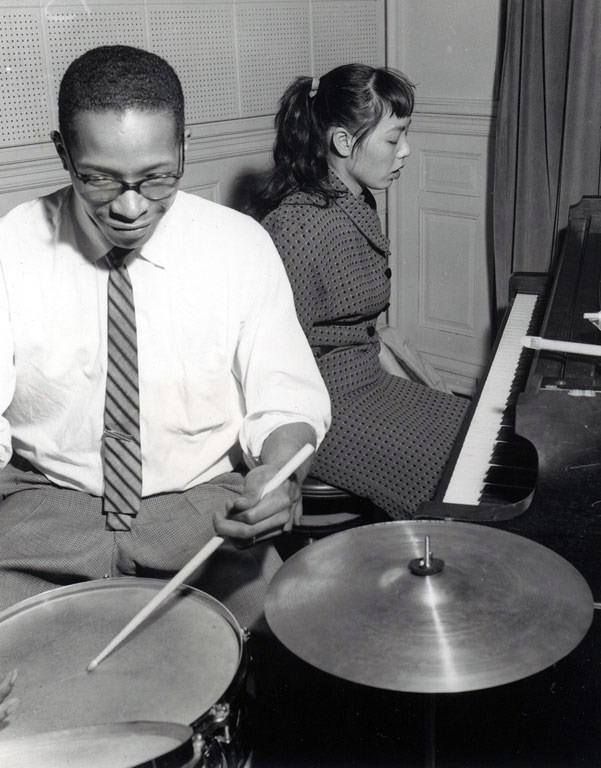 Toshiko Akiyoshi -
Alan Dawson
Toshiko Akiyoshi -
Alan Dawson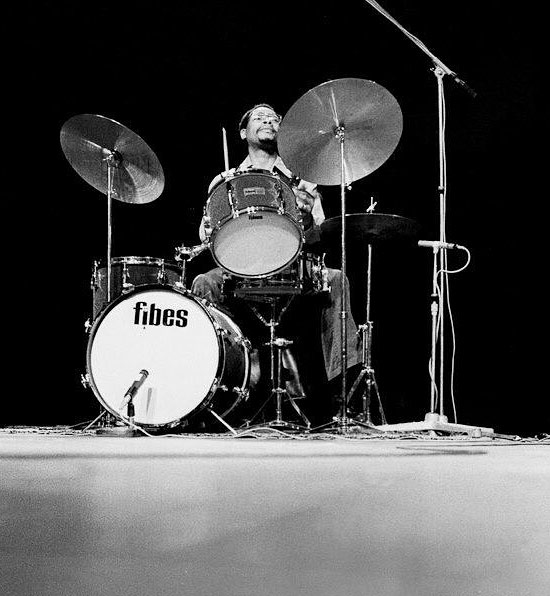 Jan Persson
Jan Persson
|
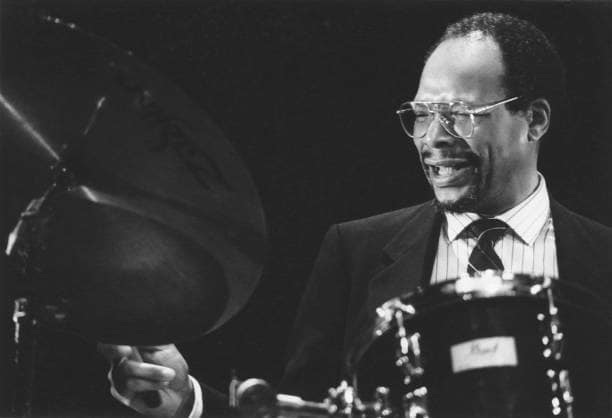
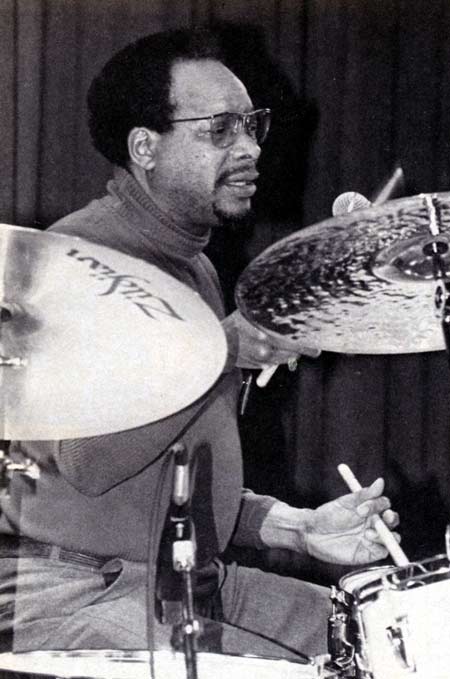

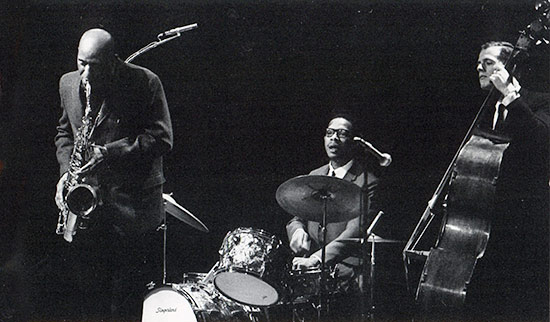 ALAN DAWSON
ALAN DAWSONSONNY ROLLINS - NIELS HENNING ØRSTED PEDERSEN
1965
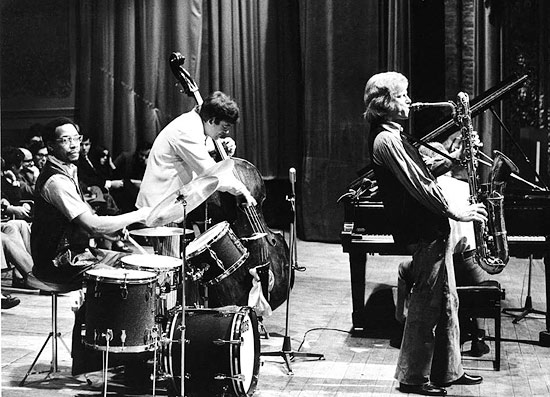 Alan
Dawson - Gerry Mulligan
Alan
Dawson - Gerry Mulligan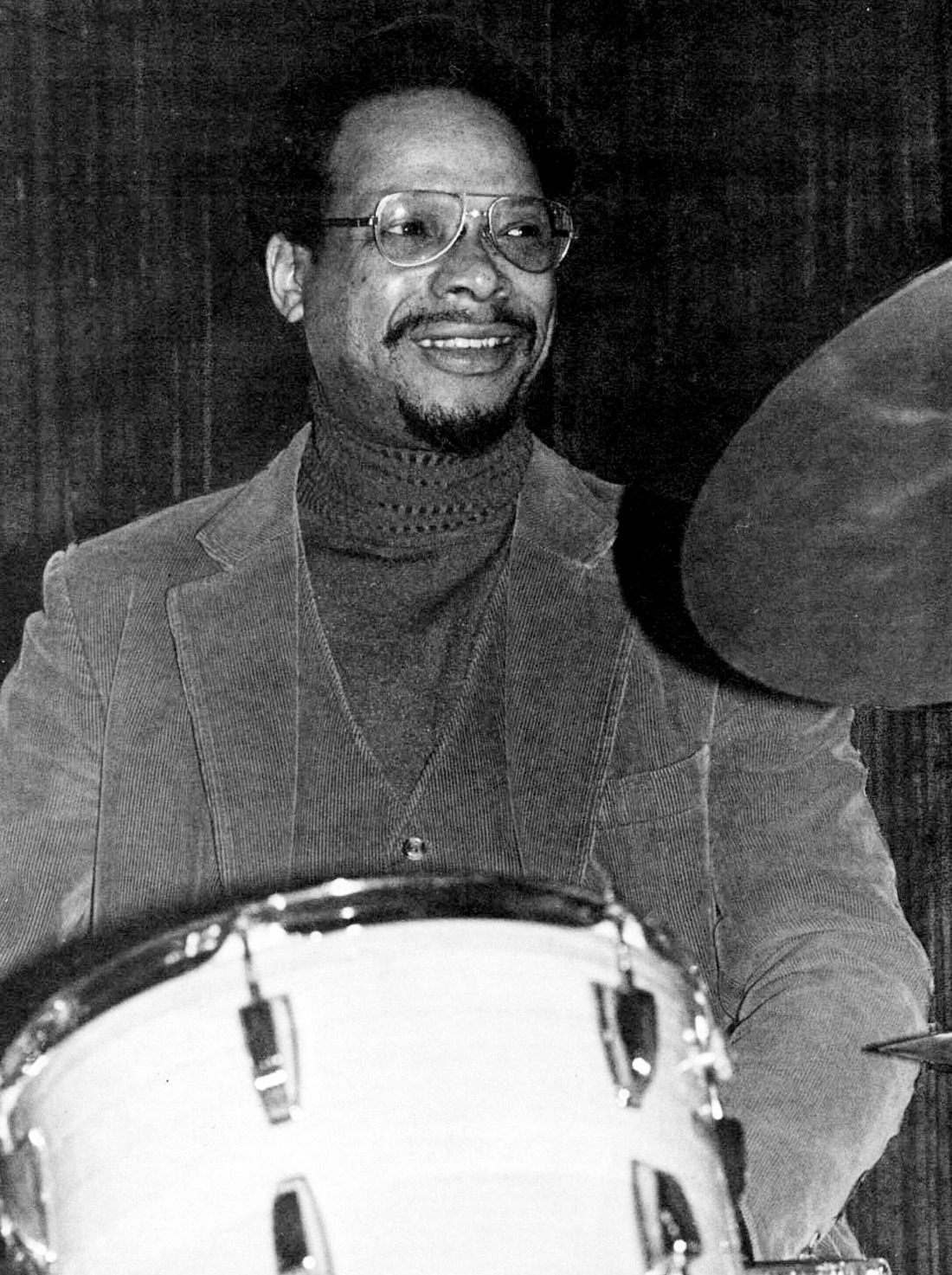
|
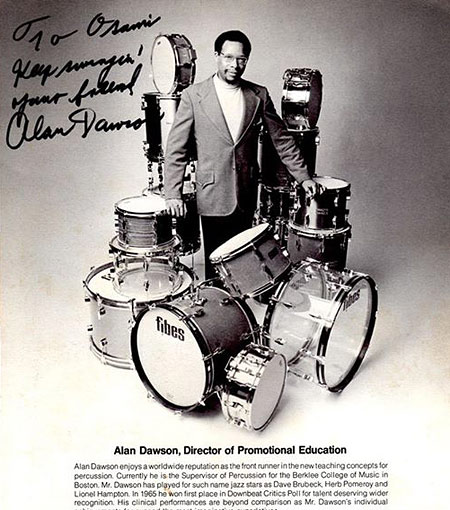
|
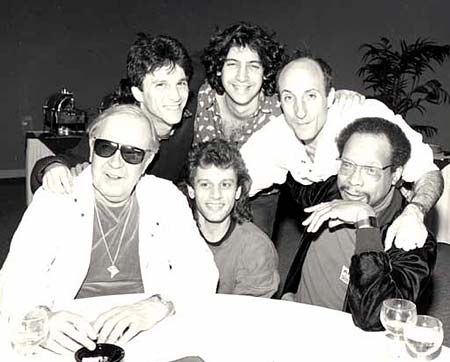 Joe
Morello - Rod Morgenstein - Danny Gottlieb -
Joe
Morello - Rod Morgenstein - Danny Gottlieb -Dave Weckl - Kenny Aronoff - Alan Dawson
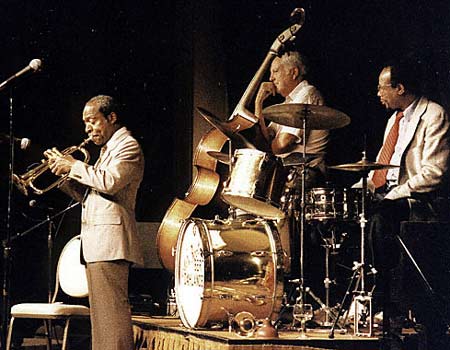
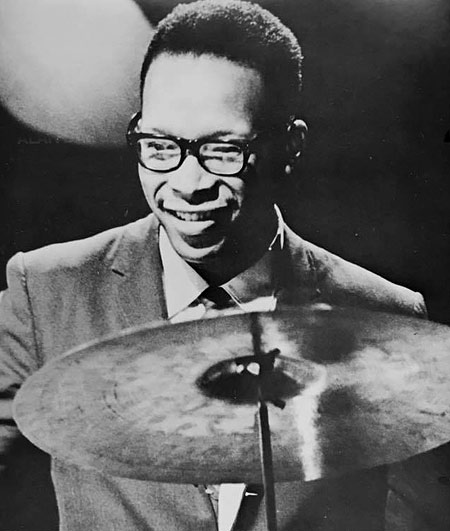
|
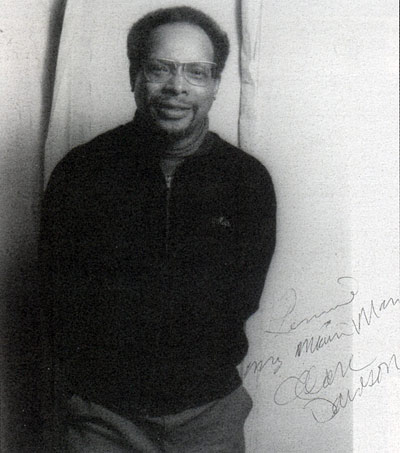
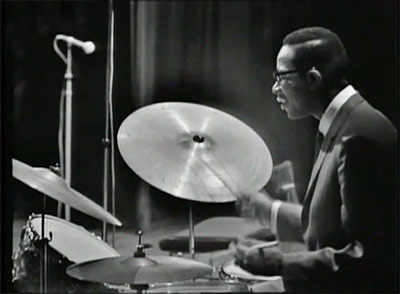
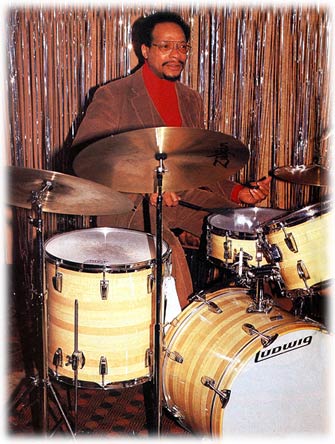 © Rick Mattingly
© Rick Mattingly
|
 thanks
for your visit!
thanks
for your visit!
CLICK:
the 500 Top Drummers:
the 500 Top Drummers:









